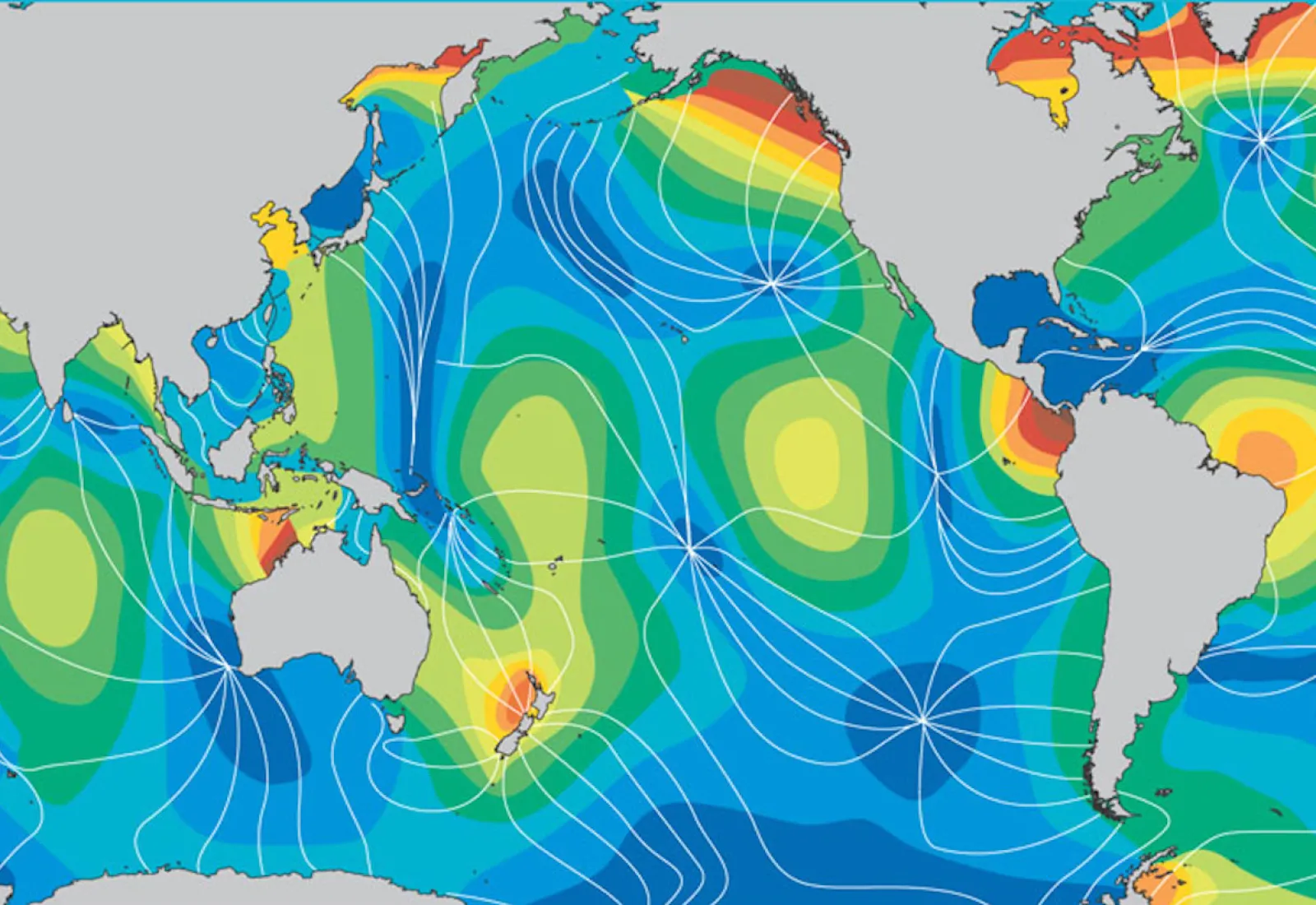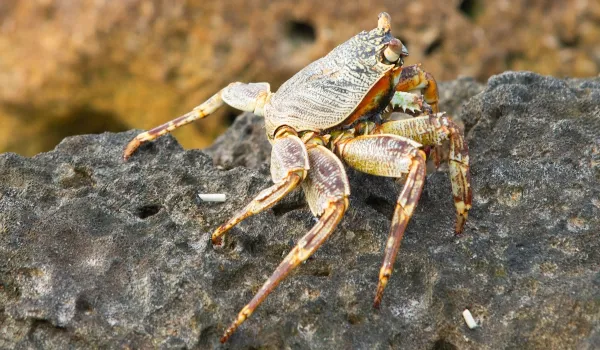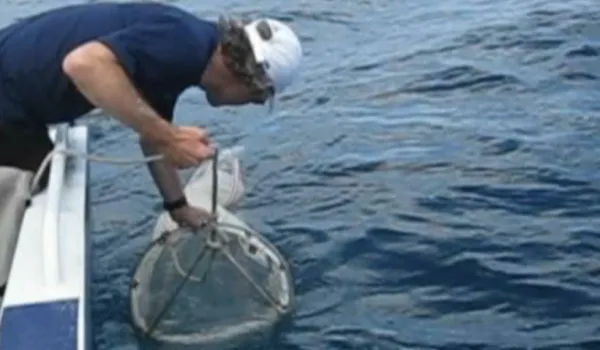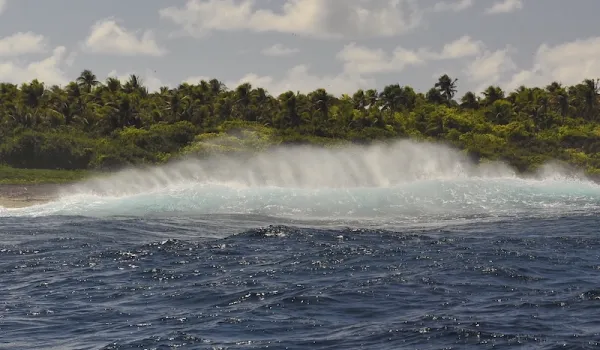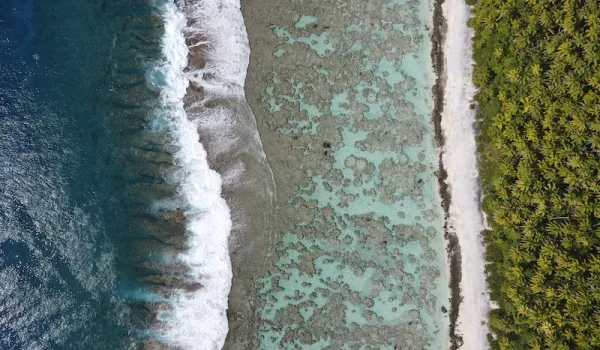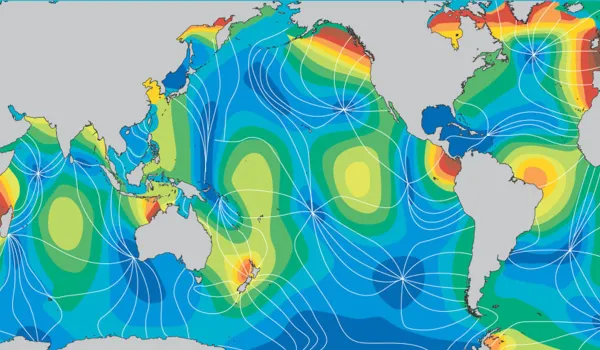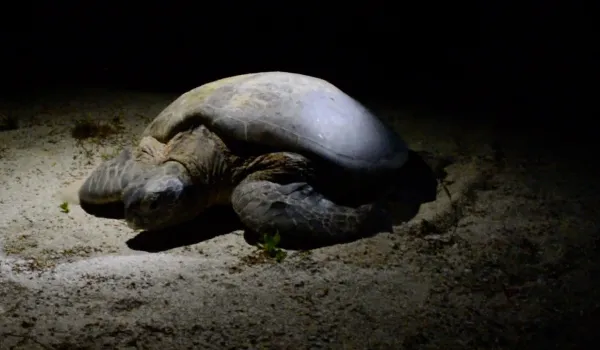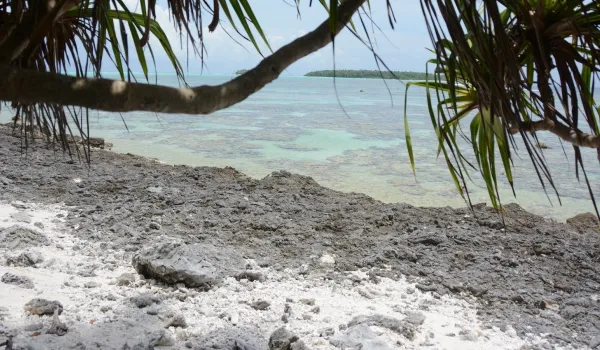It seemed appropriate for World Oceans Day to use our Nature Note to cover something about the oceans. So, we will look at tides, which turns out to be a very interesting topic here in Tetiaroa.
As you may know, tides are controlled by the gravitational field of the Moon and the Sun as the Earth rotates and the Moon orbits the Earth. Even though the Sun is many magnitudes larger than the Moon the gravitational pull from the Moon is greater because it is so much closer.

Image: Wikipedia
So for most coastlines the tides that are experienced there are primarily lunar tides that follow the moon around the Earth. Consequently, lunar tides are on a 23hour 10-minute cycle, which means any particular tidal moment (peak high or low tides for instance) are 50 minutes later every day.
As this diagram shows the very simple version of the tides is that as the Moon orbits the Earth, the high tide follows it as a “wave” around the Earth and creates two highs and two lows per day. But of course, the oceans are not uniform in depth and there are continents and islands that get in the way and break up this simple wave pattern.
What happens can be visualized if you imagine a ball dropped into the center of a pool and the waves it generates. At first it will just be one concentric wave heading out from the impact site. But then as that wave hits the pool walls and rebounds things get chaotic, with waves crossing waves. This creates a situation where waves meet waves and waves meet troughs are either amplified (Antinode below) or cancelled (node below).

Image: Wikipedia


Image: R. Ray, NASA Goddard Space Flight Center, Jet Propulsion Laboratory, Scientific Visualization Studio - TOPEX/Poseidon: Revealing Hidden Tidal Energy, Public Domain, Link
The situation with the waves that create actual tides in the Earth’s Ocean basins is of course a lot more complicated, but it does create nodes that remain in place over millennia. These nodes are called Amphidromic points and from the map you can see that there is an amphidromic point in French Polynesia. This amphidromic point means that for a large swath of the islands of French Polynesia (centered in the Society Archipelago) there is almost no trace of a lunar tide. But because the lunar tide is essentially cancelled the solar tidal influence is noticeable. The solar tide is very low amplitude (total range is about 70 centimeters) and it follows the sun, so it is high at noon and midnight and low at 6am and 6pm.

High tides at noon and midnight.

Low tides at 6am and 6pm.
The tidal situation on Tetiaroa is also affected by the fact that it is an atoll without a large break (pass) in the barrier reef. Constant wave impact on the barrier reef keeps the living coral and algae that maintain it covered in water to a level slightly above mean sea level, so the crest of the barrier reef creates a slightly raised barrier between the open ocean and the lagoon. Waves push water over this crest into the lagoon and without a pass for the water to drain out, the lagoon can pond up higher than the ocean.
On a very calm day, in early morning or late afternoon, a person on the island or in the lagoon, can see that the water in the ocean is noticeably lower than the water in the lagoon.
Because the tidal situation on Tetiaroa is so unique, observations of the level of the lagoon, the height that mini-waves wash up on a beach, and the ever-changing currents that carry food and sediment, is a constant source of amusement and wonder.
A high tide in the morning signals that there is a high ocean swell that is filling up the lagoon. The direction of that swell can be deduced by the looking to see where the current is coming from as it carries excess water from the inundated shore across to the opposite side of the island.


